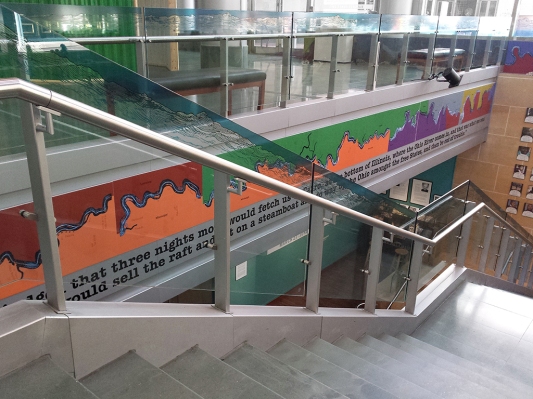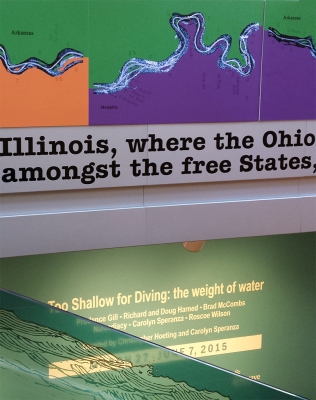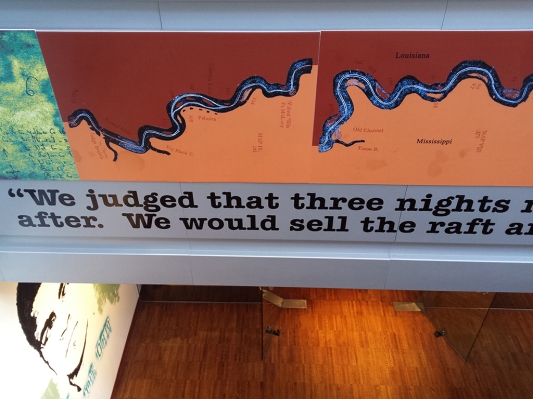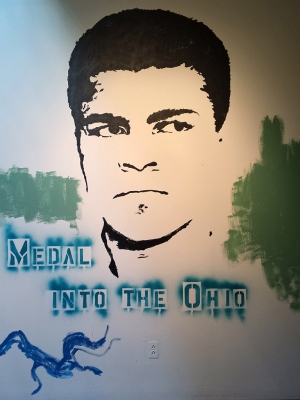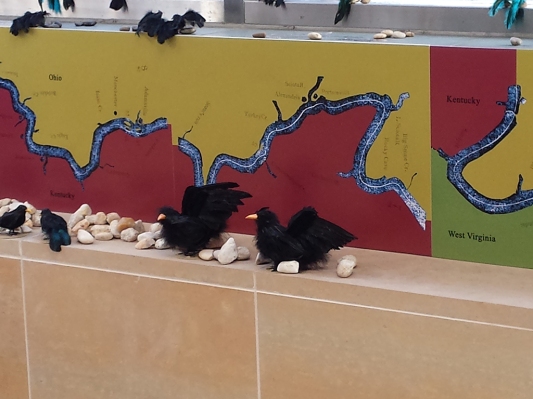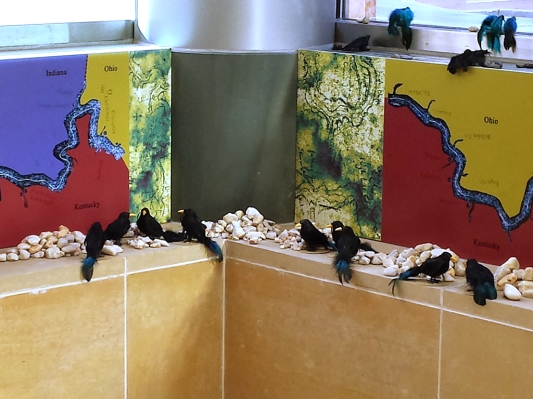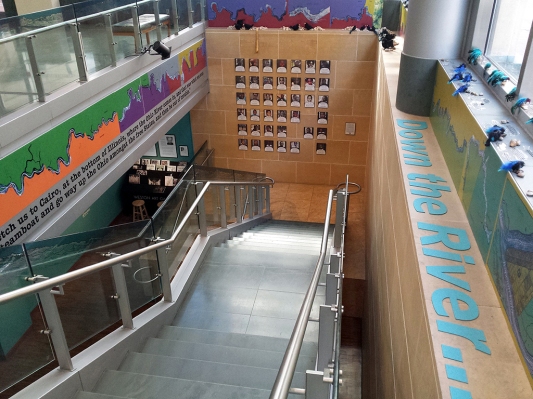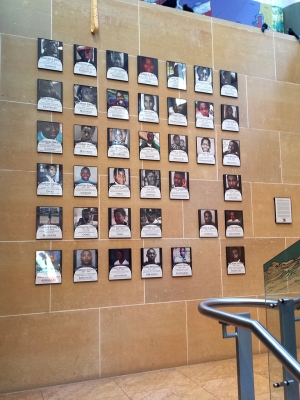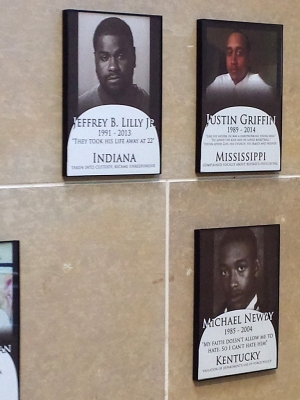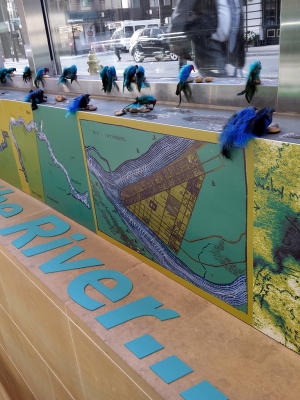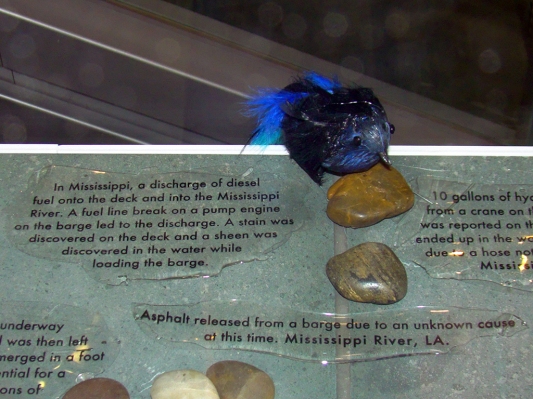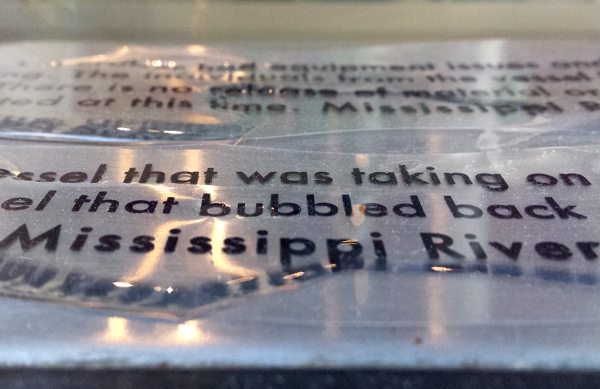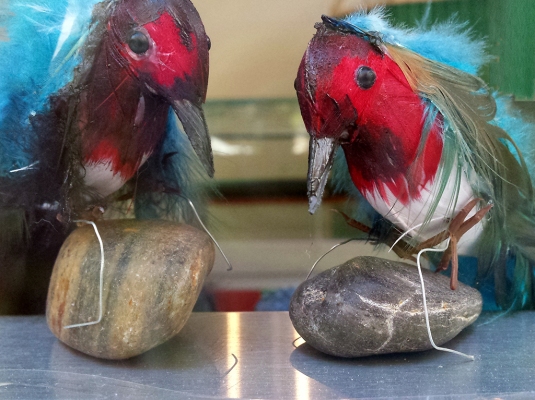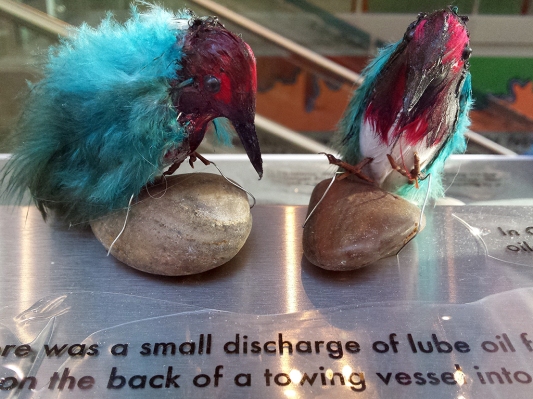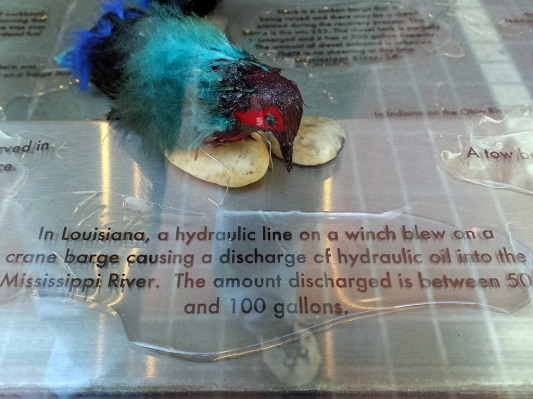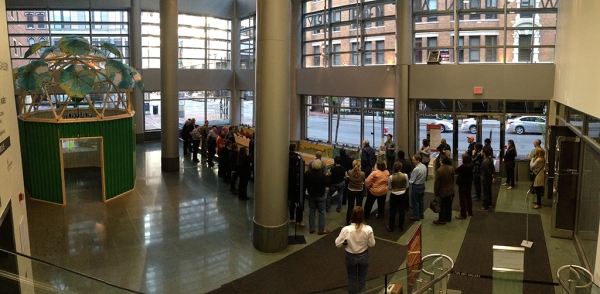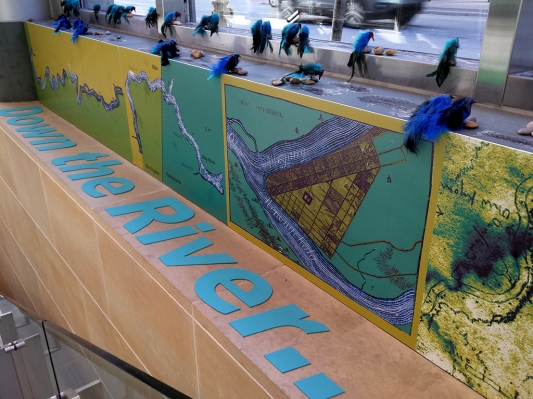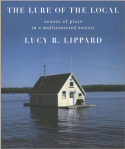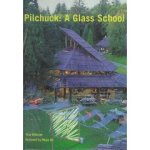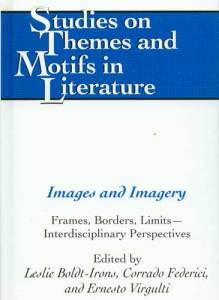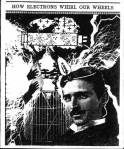The quote on the left demarcates the point in Huck Finn’s river journey with his friend, the slave Jim, where Huck is just beginning to see their way clear of the slave states. Here you can also see the repeating waves, printed on glass-cling, wrapping its way from the top to the bottom of the gallery’s staircase.
26
“We judged that three nights more would fetch us to Cairo, at the bottom of Illinois, where the Ohio River comes in, and that was what we was after . . . “
27
” . . . We would sell the raft and get on a steamboat and go way up the Ohio amongst the free States, and then be out of trouble.”
28
As a gold medal winning Olympic champion, Muhammad Ali returned from Europe to Louisville Kentucky in 1960 to find Jim Crow alive and well. In one of his new jobs, Ali had to enter through the back door. No one knows if the story is folk-lore or fact, about Ali throwing his gold medal into the Ohio River after being refused service at a drugstore counter and run out of the shop by a gang of white motorcyclists.
Coming to the end of the journey, you would have heard Ali’s voice, as I did many times as a child. He was a hero of my father’s– for his stand and integrity in objecting to serve in the Vietnam War.
30
____________
Down the River ~ 7
July 15, 2015 — Carolyn SperanzaDown the River ~ 6
July 14, 2015 — Carolyn SperanzaAs we move further down the rivers, the birds get bigger, darker, and more sinister. Again, this is a detail from the transparent, glass-cling printed wave element in the front.
19
Not only are the Ohio and Mississippi Rivers some of the dirtiest in our country, environmentally speaking – they hold our history of human trafficking. The crows make their appearance when we reach the point in the river where it divided the country in terms of slavery. In Kentucky, you were a slave. Cross the Ohio River and you were a freed person.
20
The mossy looking panels are from pencil drawings made in the 1818 original Navigator that I had scanned for the river maps. Weather these drawings were made in 1818 or not I don’t know. They are hard to see here but are clearly of the rivers and river-fronts.
21
In addition to being the messengers of darkness, specifically of slavery and racially-based death by cop, the crows had a job to do: find Muhammad Ali’s medal.
22
As you walked down the stairs, the central part of the journey is laid out in map panels to your left, with text clipped from Huckleberry Finn. Directly in front of you was a group of memorial portraits.
23
Each of these young black men and boys had died in the hands of the police, in the states along the Ohio and Mississippi Rivers.
24
Some of them were stand-up like Johnny Gammage, others were living on the rougher side of life, but absolutely none of them had done anything that warranted being shot and killed by the police. The entire gallery, both floors, could have been filled with this type of memorial portrait- there are enough deaths just like these to warrant it.
25
Down the River ~ 4
July 12, 2015 — Carolyn SperanzaHere’s where you can see a closeup of the glass cling that the gallery’s sign guy installed for me. I had taken a tiny-teeny piece of ocean wave clip art and turned it into a repeating tile. We used it on the gallery window and the upper outside edge of glass, wrapping its way around all the way down the stairs to the second set of galleries and to the conclusion of the journey in New Orleans. I loved the way the this graphic interacted with the gallery’s already existing white lettering signage on their windows and interior glass.
12
There were about a hundred of these little birds, perched on river stones. Even though they started life in a factory in China and then made their way to my studio factory, they each had their own distinct personalities.
13
In addition to the oil-slick sickness I gave the birds fluorescent blue feathers. My idea was that with enough toxicity, wildlife will surely mutate into a creature that we may not recognize as a bird in the traditional sense.
14
This text came directly from a report made by an average citizen to the U.S. Coast Guard. Amazingly, you can find them all, thousands of reports, in spreadsheets on a federal web site. The text was printed on transparencies, cut up in wavy curvy shapes and then coated in an epoxy, creating the appearance of a puddle.
15
Down the River ~ 3
July 10, 2015 — Carolyn SperanzaHere’s the entrance gallery, on the top floor of the Weston. You can see Richard and Doug Harned’s “Water Theatre” to the left. This shot was taken during the artist presentations session one evening in April.
8
Here I am at the top of the stairs that go down into the other gallery spaces. “Down the River: Muhammad Ali threw his Olympic Gold Medal into the Ohio” was made for the staircase. You can probably see the street windows to the side and behind me with the smaller birds perched there.
9
Over in the Carnegie Library archives, you can find a collection of the original “Navigators.” Kind of like farmer almanacs, on a yearly basis, boatmen would chronicle the twists and turns of rivers, as well as the development of army posts and towns along the riverfront. The Navigator that I used for the map panels was published in 1818. It took some work to determine where current state lines would have been drawn.
10
This is the starting point of the journey down the river. I just love old maps, and this one of Pittsburgh is awesome. The colors are aesthetic choices on my part, although as we go further south, state colors get redder and redder. The printing is direct to foamcore with just a mild sheen.
11
